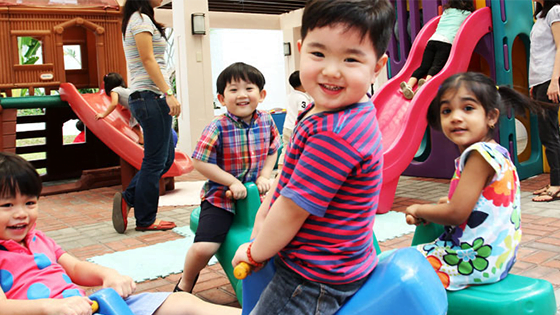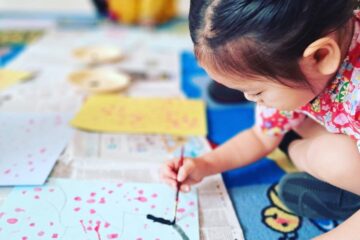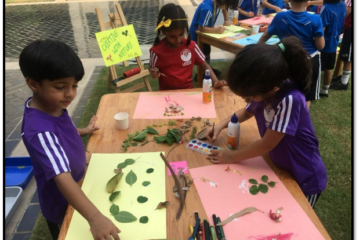Toddlers and kids going to preschool have an attention span of around 10 – 12 minutes, and once it’s exhausted, learning and listening is no longer fun for them. So when it comes to story time mix it up a bit. Use suitable tips for the different books you read and make story time as fun and as interactive as possible.
Some kids respond to books differently depending on the time of day. Try selecting a quiet time of the day when your toddler is playing or in a good mood. Maybe, after meal time or after a bath and before bed to look at a book together.
Here are the ways to make story time more enjoyable next time you’re reading to your toddler or preschool kids.
1. Select the right story
Infants and toddlers typically do not want to spend time on story reading or listening. They are more interested in turning pages in the book themselves and looking at the exciting pictures they see. Choose books that are appropriate for their age for story time for your toddler or preschool. Select the books that have clear storylines, illustrations, rhythmic language, and interesting vocabulary.
You don’t have to follow the exact storyline if the child is too young to know the words. Talk about the pictures, shapes or make your own story. Simply talking to your baby helps develop their language skills.
2. Make a connection with the story of preschool
Try to connect the story with your toddler or preschooler’s prior knowledge or personal experiences. Something that’s familiar to them and that they can relate to. Use “flashcards” to introduce and discuss new vocabulary. Toddlers add their imagination to the content of storytime whenever they’re given the opportunity. Ask toddlers what they want to add and you might end up with some amazing results.
3. Enjoy learning together
Think about what you want your toddler or preschool to learn from the book. Identify concepts you want to develop, vocabulary that you want to discuss any questions you want to ask. Allow them to ask questions if any. Tell them that it is good to be a learner.
4. Discuss the book cover
Before reading the book, encourage your toddler or preschool to describe what they see on the book cover and predict what the story is going to be about.
5. Talk about the book’s lifecycle
Talk to your toddler or preschool about why you are reading this book and how the book came to be with you today. Describe the role of the author (writes the words), the illustrator (draws the pictures), the printer (produces the book) and the retailer (sells the book).
6. Put on a show when you’re reading the book
Be expressive when you’re telling a story. Use facial expressions and voice variations to add excitement and to bring the characters in the book alive. Each part of the body creates ways for sending and receiving information, energy, and understanding.
a. Eyes
Eye contact makes feel more connected and special. Making eye contact while reading aloud also allows for a healthy pause. Furthermore, this will slow things down and keep kids engaged.
b. Ears
If the kids are listening, let them give the proof. Ask questions like, “what sound do you think cow makes?”
c. Speech
Let the toddlers be the storyteller sometimes. Let them narrate the story if they are willing to do so.
d. Body
Children show gestures and body movements during story time. Even storyteller depicts the story through body gestures. This activity is engaging.
7. Ask questions
Asking questions is a great way to see if your child understands what you read to them. Even if your child is too young to respond, questions are a good way to encourage both-way communication.
8. Summarize the story
After reading the book, review the story plot and help your toddler or preschool to summarize the story themselves if they’re old enough. You can extend the story time by retelling the story using props or flannel board characters, adding an activity or even role play.
Therefore, there are different ways a child learns:
• Visually (images, pictures)
• Audio (sound, music)
• Verbal (speech, writing)
• Physical (body and hand gestures, sense of touch)
• Social (group activities)
Therefore, infants and toddlers typically enjoy looking at pictures in and talking about those pictures. It is not important to read out each line given in the book. What is more important is the time looking and talking about the pictures together. Books are a great way to bond with your child while also building learning habits and vocabulary. Any book time with your child will teach them to love books and reading.




0 Comments